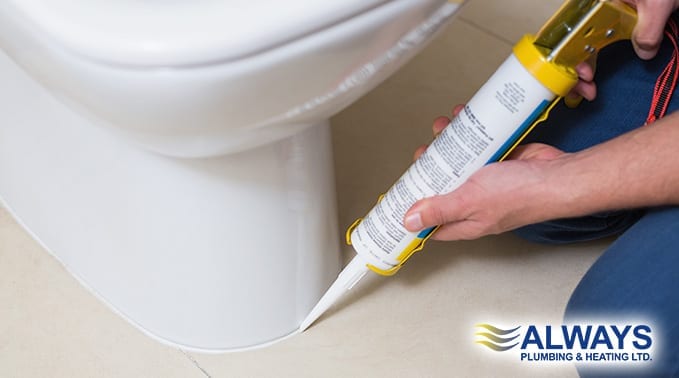You groggily shamble into the bathroom, use the toilet and flush it. After washing your hands, you start ambling back to bed, but in the distance, you can hear it. “Wait, was that…” you think. The “drip…drip…drip” grows louder and heavier and more frequent. “Please, no,” you mumble under your breath. With a deep breath and a quick prayer, you check the tank. Of course, in the most inopportune time possible, the toilet tank has decided to spring a leak. First, the bad news: you’ve got to replace the toilet. Bummer. Now for the good news: The process to remove your toilet and install a new one isn’t as mind-numbing as it might seem; it’s pretty straightforward, actually.
Always Plumbing & Heating has a few notes to guide you through the process of replacing your toilet, but if you’d rather leave it up to the professionals, give us a call and let the best plumbers in Northern Alberta handle it from start to finish.
What Tools You’ll Need
- An adjustable wrench
- A screwdriver
- Wax ring
- Plumber’s putty
- Soft, absorbent materials to support the removed toilet
- Maybe: a closet flange (depending on if yours needs replacing)
Prep
- You’ll need to take care of a few things before getting into the nitty-gritty of replacing the toilet. The water supply will need to be turned off, after which you’ll drain the excess water currently in the toilet. Make sure you’ve got a space ready to place the old toilet, which will have the not-so-pleasant remnants of sewer water underneath once you lift it off the ground – unnecessarily staining your floor is something we want to avoid!
Goodbye, bolts
- Removing these little guys shouldn’t be an issue, but depending on how long your toilet has been around, the bolts securing it to the ground may have become welded to the nuts securing them in place. If that’s the case, you’re going to need to bring out the hacksaw and cut them off.
Removal of the toilet
- Next is getting the toilet out of there. It’ll be easier to do so with the tank disconnected from the bowl, so get your wrench onto the water supply tube that links up with the fill valve and get the bolts undone there, then separate the tank. With just the bowl remaining, you should have an easier time lifting the toilet from the closet flange bolts underneath.
New flange?
- The flange is what lies underneath and anchors your toilet to the ground. For the purposes here, let’s assume it doesn’t need replacing, and the current one is still functioning and devoid of leaks.
Placing the new toilet
- Before you fit the new unit onto the flange for good, hold the bowl over the flange to make sure the bolts line up. If they do, place the bowl on the bolts and check to see if the toilet is level – if it’s not, you’ll need to even it out with shims. Once you double-check how everything fits, you can get the wax ring ready and adhere it to the horn of the toilet; the wax will need to be above room temperature so it can form, otherwise it’ll be disfigured and won’t seal correctly. Once the ring is set in place and squished down to form (which you can do by sitting on the toilet, facing backwards), you can finish it off with a caulk seal around the base to lock in everything with an extra layer of protection.
Re-connection
- Now that the toilet is secure, you’ve got the all-clear to hook the bowl back up to the tank and re-attach the water supply.
Cash-saving Tip: Low-flush Toilets
And voila! You’re ready to put your brand-new toilet to use. Ideally, this one won’t decide to start leaking anytime soon and you’ll have a trusty unit to rely on for years to come. Of course, if you’d prefer to leave it up to the professionals, Northern Alberta’s experts at Always Plumbing & Heating can handle all of your toilet replacement needs. Call 780-489-8118 (Edmonton) or 587-601-1253 (Fort McMurray) to schedule an appointment today!
Should something unexpectedly happen to your toilet in the middle of the night, for instance, we offer around-the-clock service 365 days a year.
